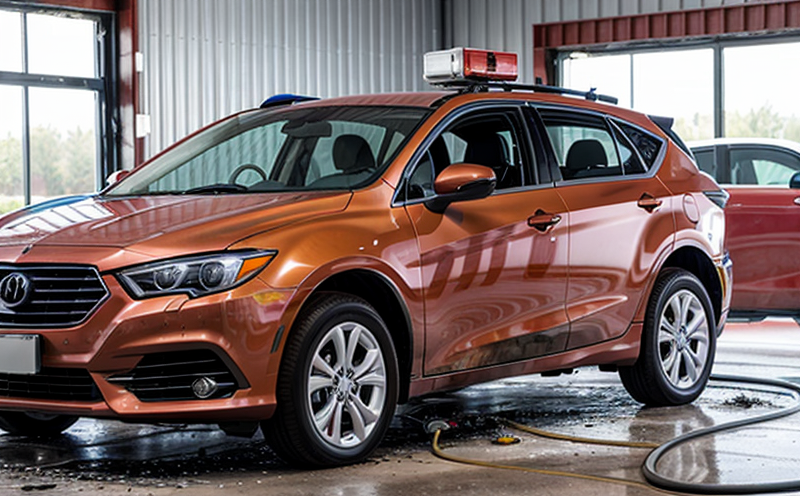SAE J1645 Flammability Testing of Automotive Headliners
The SAE J1645 flammability test is a critical procedure for evaluating the fire safety performance of automotive headliners. This standard ensures that materials used in vehicle interiors are resistant to ignition and do not propagate flames, which can significantly reduce the risk of fire incidents within vehicles.
Headliners are a key component in automotive interiors as they provide insulation, enhance occupant comfort, and offer aesthetic appeal. However, these components must also meet stringent safety regulations to ensure passenger protection during emergencies such as vehicle fires. The SAE J1645 test is widely recognized for its ability to assess the flammability characteristics of headliner materials under controlled laboratory conditions.
The test involves subjecting a specimen cut from the actual material used in headliners to controlled flame exposure. Specimens are subjected to both open-flame and smoldering ignition sources, simulating real-world fire scenarios that might occur during vehicle fires. The primary objective is to measure how quickly the material ignites and extinguishes, as well as its ability to prevent flame spread.
The SAE J1645 test requires precise sample preparation, including the accurate measurement of specimen dimensions and the application of a consistent weight to simulate real-world conditions. Once prepared, the specimens are exposed to various ignition sources for a prescribed period under controlled environmental conditions. The behavior of the material is then analyzed based on specific criteria outlined in the standard.
The test results provide valuable data that can be used by manufacturers and designers to improve the fire safety performance of headliner materials. By adhering to this standard, automotive companies ensure compliance with global regulatory requirements and demonstrate their commitment to occupant safety. This testing procedure is particularly important for electric vehicles (EVs) where battery fires pose a significant risk.
SAE J1645 flammability testing is just one part of the broader fire safety testing landscape in the automotive industry, which also includes other standards such as SAE J2039 for seatbelt webbing and SAE J2268 for airbag deployment. Together, these tests form a comprehensive approach to ensuring that vehicle interiors are safe and reliable.
The SAE J1645 test is essential for quality control in the automotive manufacturing sector. By conducting this test early in the development process, manufacturers can identify potential issues with material selection and design before production begins. This proactive approach helps reduce costly redesigns and recalls later in the product lifecycle. Additionally, compliance with this standard enhances brand reputation by demonstrating a commitment to safety.
In conclusion, SAE J1645 flammability testing is an indispensable tool for ensuring the fire safety performance of automotive headliners. Its rigorous methodology and emphasis on real-world conditions make it a vital component in the development and quality assurance processes within the automotive industry. By adhering to this standard, manufacturers can ensure that their products meet stringent regulatory requirements while also enhancing occupant safety.
Applied Standards
| Standard Number | Description |
|---|---|
| SAE J1645 | Procedure for determining the flammability of automotive headliner materials. |
Why Choose This Test?
- Ensures compliance with international safety regulations.
- Provides valuable data for material selection and design improvements.
- Enhances occupant safety in the event of a vehicle fire.
- Saves costs by identifying potential issues early in the development process.
Quality and Reliability Assurance
- The test results are repeatable, ensuring consistent quality across different batches of materials.
- Comprehensive analysis provides detailed insights into material behavior under various fire scenarios.





